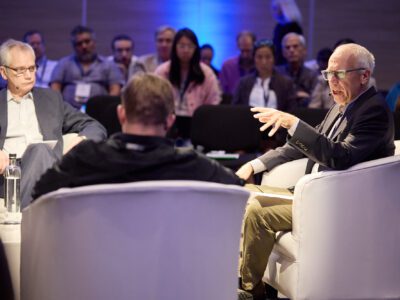Conference On SB 100 & California’s Race To A Carbon-Free Grid
California Lawyers Association Environmental Law Section will hold daylong event on March 28th in Downtown Oakland
The California Lawyers Association’s Environmental Law Section is hosting a conference on Thursday, March 28th in Downtown Oakland entitled “SB 100 and the Race to a Carbon Free Grid in California.” It will feature top officials from the Newsom Administration and other energy experts, including an “Energy 101” pre-panel for attorneys new to the field. The event is co-sponsored by Berkeley Law’s Center for Law, Energy and the Environment (CLEE), UCLA School of Law’s Emmett Institute on Climate Change & the Environment, and UC Davis School of Law.
As Legal Planet readers know, SB 100 (de León, 2018) requires California’s grid to be powered 60% by eligible renewable resources by 2030 and carbon-free by 2045. Achieving these ambitious goals will require intensive implementation work by California’s key environmental agencies, utilities, and grid operators, as well as significant stakeholder involvement.
To delve into these issues, the “SB 100” conference will feature top speakers, including:
- Jared Blumenfeld, Secretary, California Environmental Protection Agency
- Janea Scott, Vice Chair, California Energy Commission
- Alice Reynolds, Senior Advisor for Energy, Office of Governor Gavin Newsom
- Danny Kennedy, Managing Director, California Clean Energy Fund
- Nancy Sutley, Chief Sustainability and Economic Development Officer, Los Angeles Department of Water and Power
You can register on-line here and download the full agenda here [PDF]. The event will take place at the State Building in Downtown Oakland, conveniently located near BART. Discounted law student rates are available. Hope to see you there!
Reader Comments
3 Replies to “Conference On SB 100 & California’s Race To A Carbon-Free Grid”
Comments are closed.







It’s more like a sprint half-way and then a break.
While SB 100’s stated policy goal is 100% renewable and zero-carbon energy resources for public and local utilities by 2045, it only requires 60% compliance by 2030 . . . and a floor of 60% thereafter:
“The commission shall establish appropriate three-year compliance periods for all subsequent years that require retail sellers to procure not less than 60 percent of retail sales of electricity products from eligible renewable energy resources.”
(SB 100 Section 3 amendment to Public Utilities Code Section 399.15(b)(2)(B)).
A good start. But we also need to get to the finish line.
60% could very well be an adequate floor for eligible renewables on the grid going forward. Remember: the long-term goal is carbon free power, not 100% renewable power from specific technologies like solar or wind. So that additional increment could be met with a combination of large-scale hydropower, bulk energy storage, and other technologies like certain biogas that gets us to a GHG-free grid.
Is it intended that this 100% renewable be net considering possibilities for negative emissions? Could a natural gas plant be zero carbon if they pay for carbon sequestration elsewhere.
Also, does fission and fusion count as “carbon free”? (Strictly speaking fast plutonium breeder reactors and thorium cycle reactors are also “renewable” in that they make more fuel than they consume.)